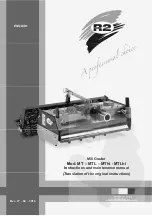
Pathway Connectivity
Quattro Manual
September 2014
4
Protocols Supported
DMX512
The most widely used digital multiplex protocol for controlling
entertainment lighting and effects equipment. The DMX signal consists of 512 8-
bit control packets sent asynchronously over a two-pair shielded cable at 250K
Baud. The standard connector type is 5 pin XLR. The standard has been
revised several times over the years, with the latest being ANSI E1.11 DMX512-
A (2005). The Pathport Quattro is designed to work seamlessly with all variants
of the protocol.
DMX is a last mile protocol, daisy-chained between end fixtures.
Ethernet Protocols
Ethernet protocols are used to multiplex DMX data over Ethernet
networks, largely to circumvent control channel limitations inherent in the DMX
standard. The Pathport Quattro supports the most widely accepted.
Pathport Protocol: A broadcast protocol developed by Pathway
Connectivity and implemented by a variety of console manufacturers.
ArtNet: A broadcast protocol developed by Artistic Licence. Its free
distribution has made in popular with media server manufacturers. Because this
is not a standard, some implementations may not work with others.
Strand Shownet: A proprietary broadcast protocol developed by Strand
Lighting and used exclusively in Strand lighting consoles.
ANSI E1.31 streaming ACN (sACN): A multicast industry standard
developed and maintained by the Technical Standards Program of the
Entertainment Services and Technology Association (ESTA). The standard is
available for a nominal cost from ESTA. This standard provides the DMX512
data transport for the separate ANSI E1.17 ACN (Architecture for Control
Networks) industry standard.
sACN is the transport used by ETC Net3. The Quattro is fully compliant
with Net3, and will seamlessly receive either Final Draft 20, or the ANSI
approved versions of sACN.
Remote Device Management
ANSI E1.20 Remote Device Management is an industry standard, also
published by ESTA, which allows remote configuration of last-mile DMX devices,
using the same wire pair that carries the DMX signal. Like DMX, RDM requires a
separate dedicated controller to generate the signal packets the Quattro will
route. The freely available Pathport Manager is required to use the OCTO as an
RDM gateway to configure DMX-based equipment.



























